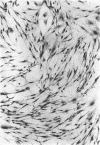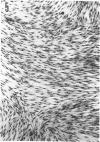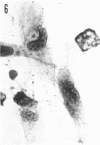Abstract
Miller, Robert E. (University of Nebraska College of Medicine, Omaha), Norman G. Miller, and Roberta J. White. Growth of Leptospira pomona and its effect on various tissue culture systems. J. Bacteriol. 92:502–509. 1966.—Leptospira pomona strain 3341 was grown in association with primary fetal bovine kidney (PBK) and human embryonic skin-muscle fibroblastic (HE) cells in Eagle's minimal essential medium (MEM) with 5% sheep serum. Growth curves of leptospires in PBK and HE cell cultures showed no substantial increase in growth above that obtained in Eagle's MEM in the absence of tissue culture cells. This suggested that no stimulatory growth factors for leptospires were produced by the tissue cells. Fibroblastic cells of the PBK monolayer showed separation, deterioration, and, finally, complete disintegration. Epithelial-like cells remained unaffected. HE cells showed the same cytopathic effect as PBK fibroblastic cells, indicating that this effect was not limited to PBK fibroblastic cells. Warthin-Starry stains of PBK and HE cell monolayers showed masses of leptospires adhering to fibroblastic cells, whereas only a few were seen on epithelial-like cells. Large numbers of leptospires on the surface of fibroblastic cells are very likely associated with the cytopathic effect. Dislodgment of leptospires from fibroblastic cells did not increase the total number of spirochetes in the culture. This indicated that leptospiral growth did not occur on the surface of these cells.
Full text
PDF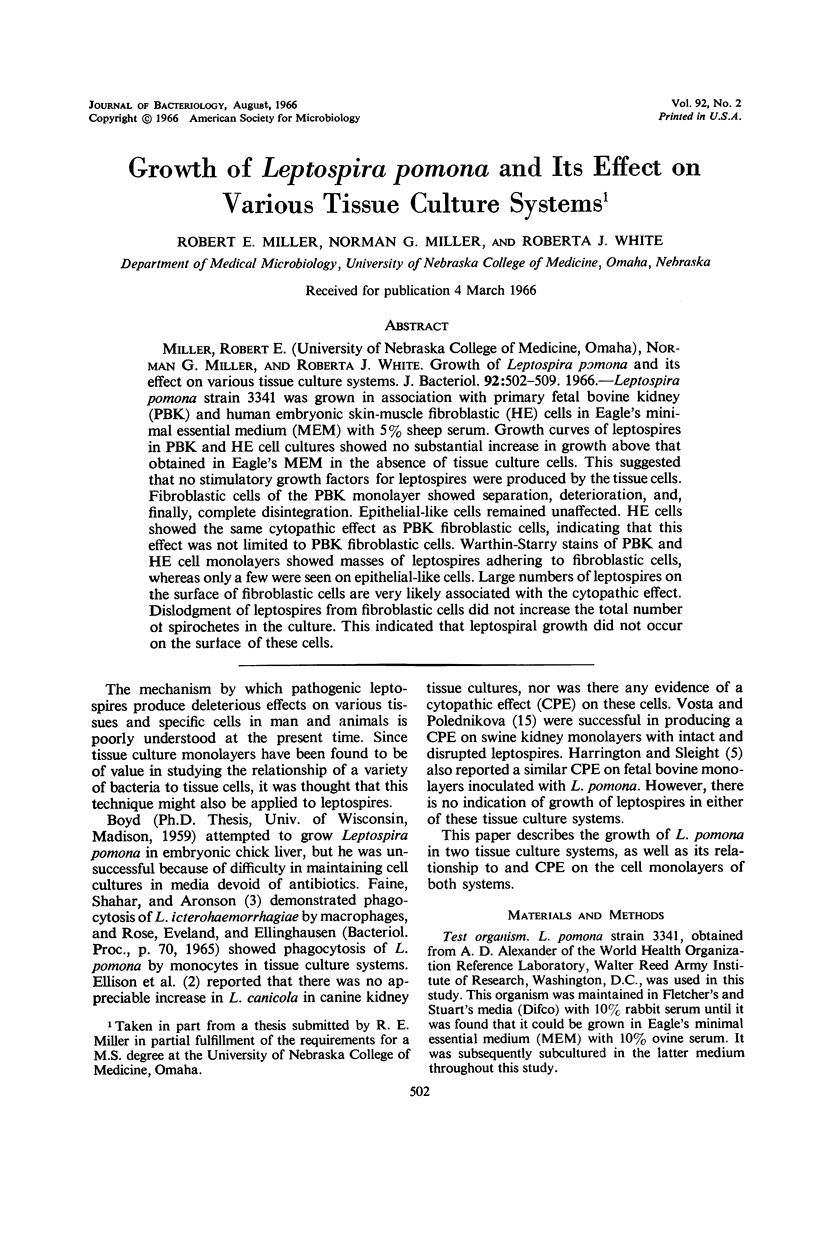
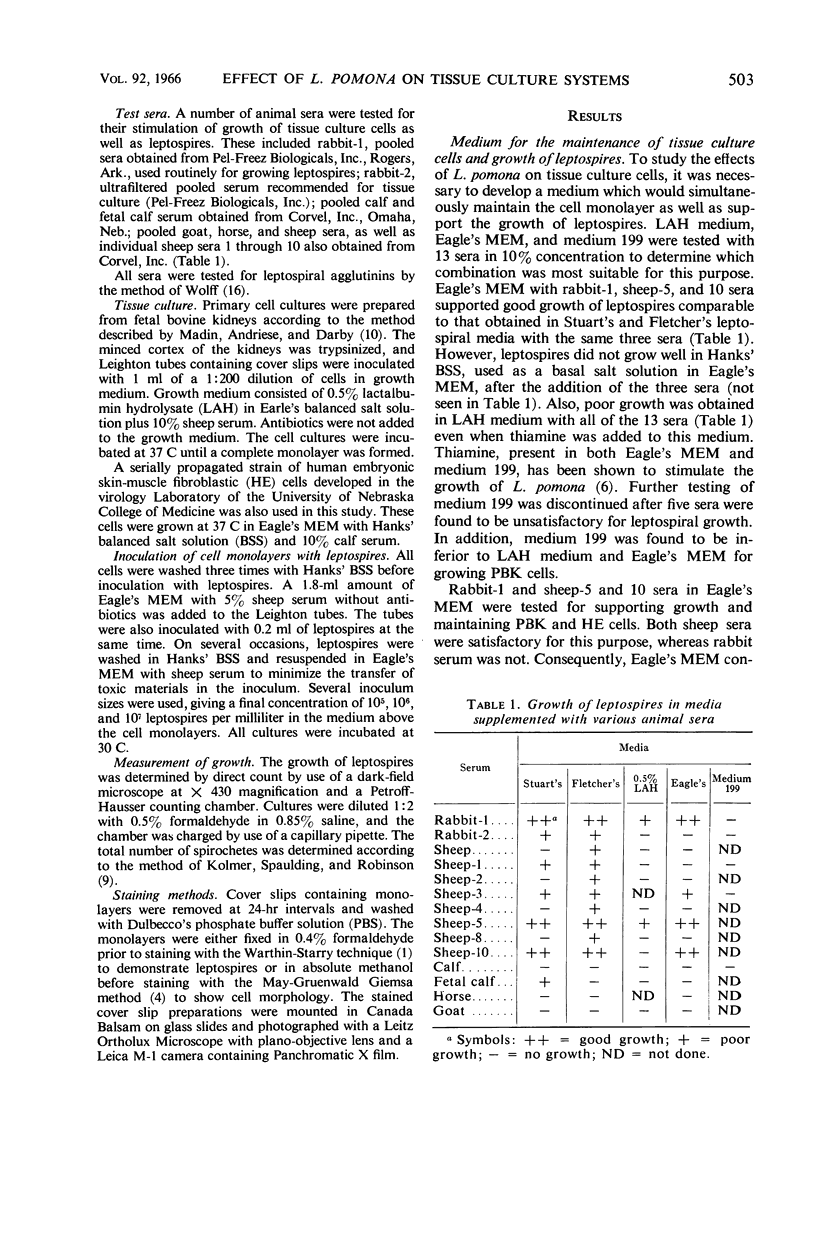
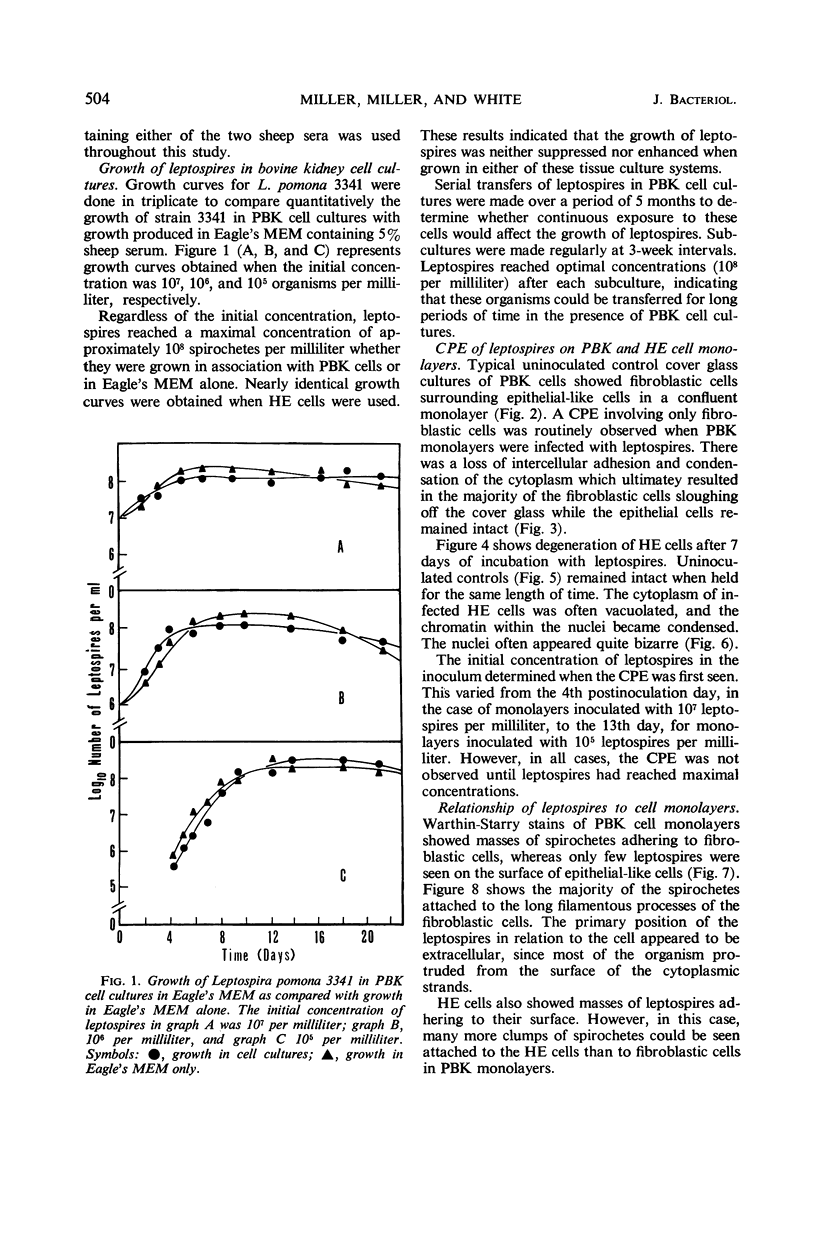
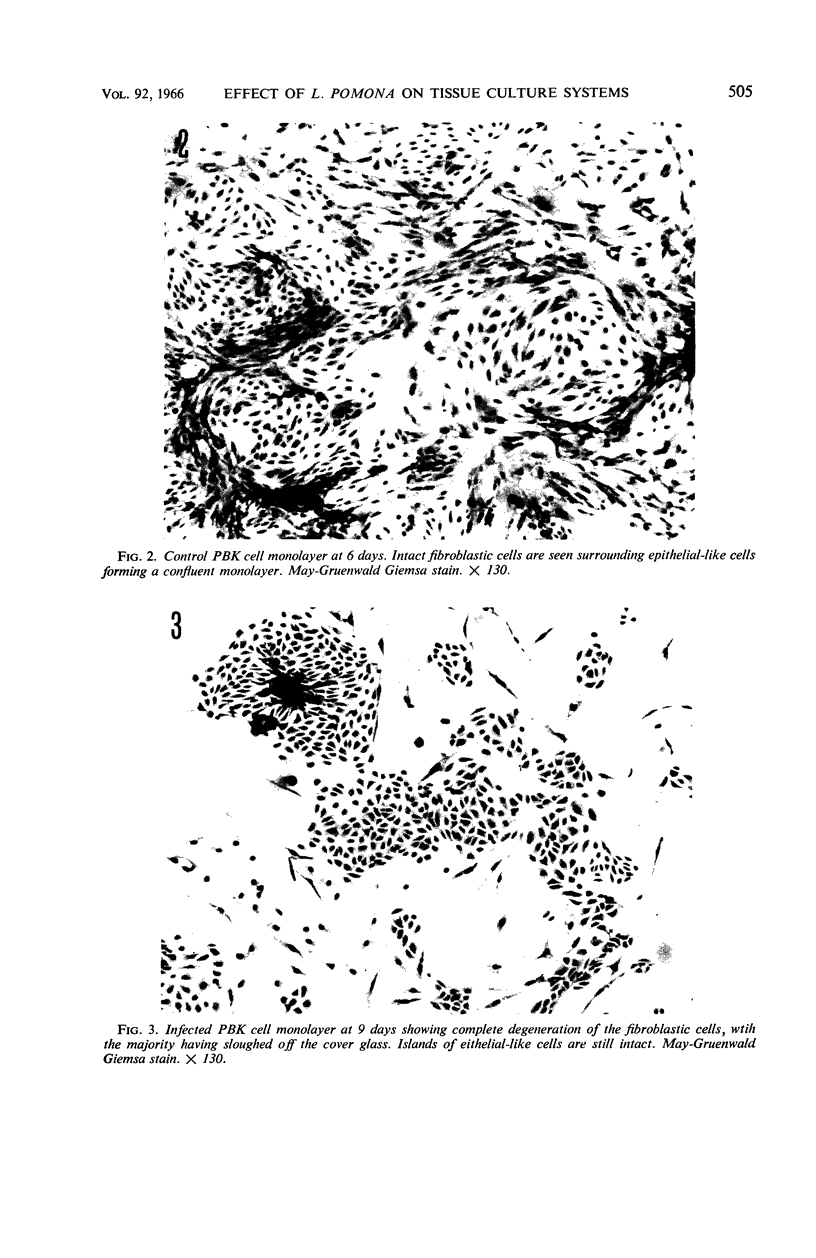
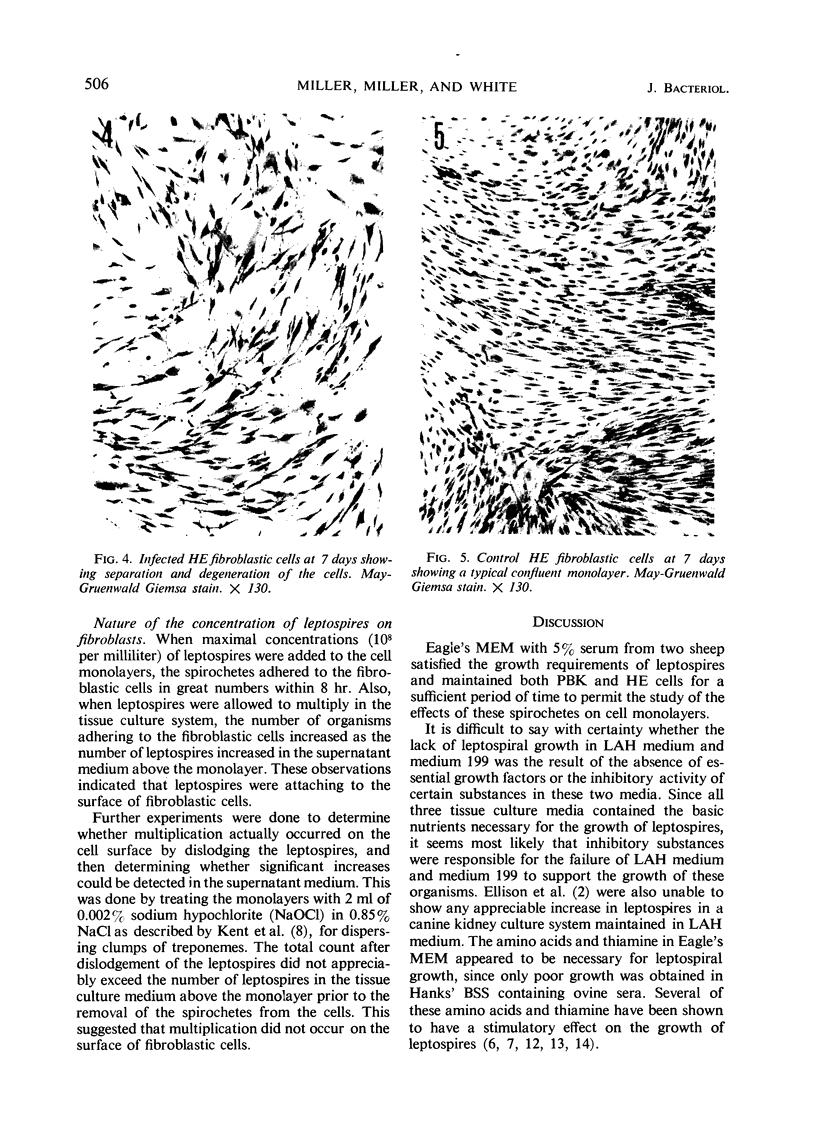
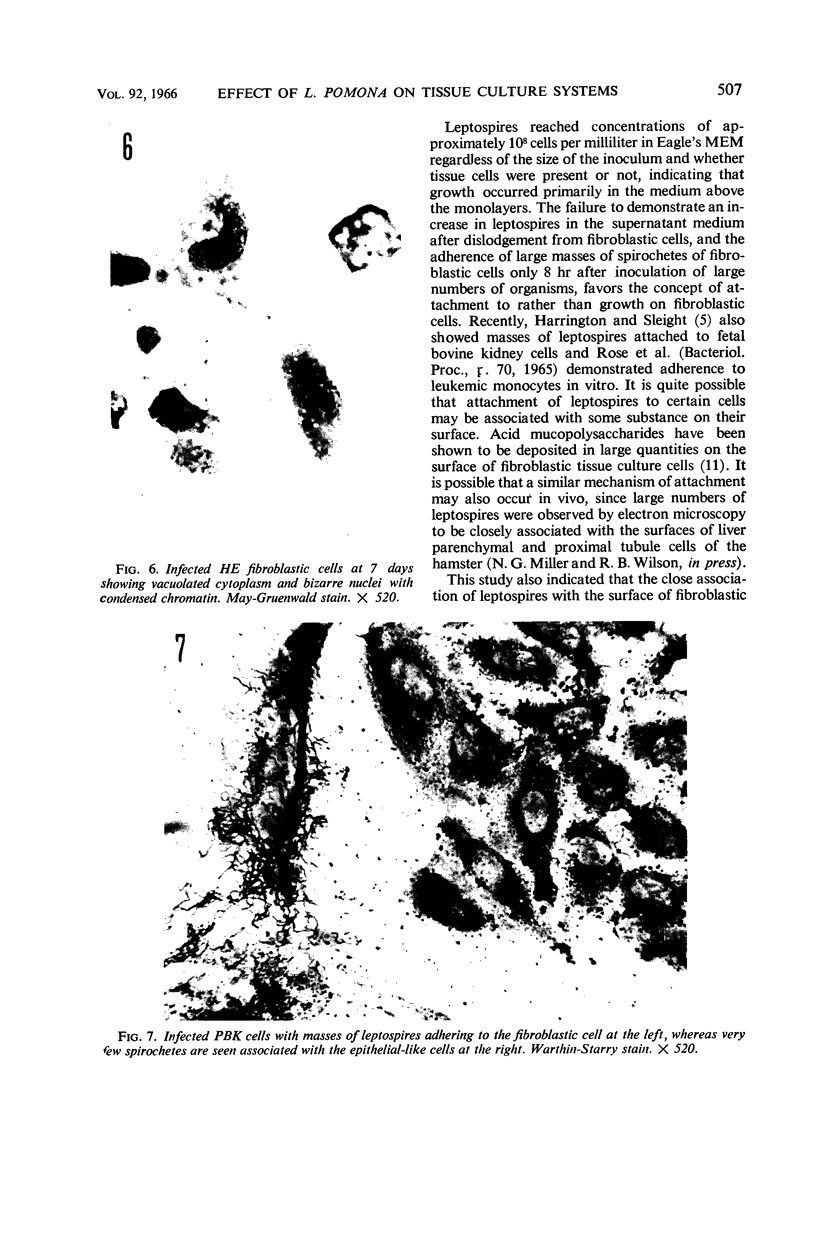
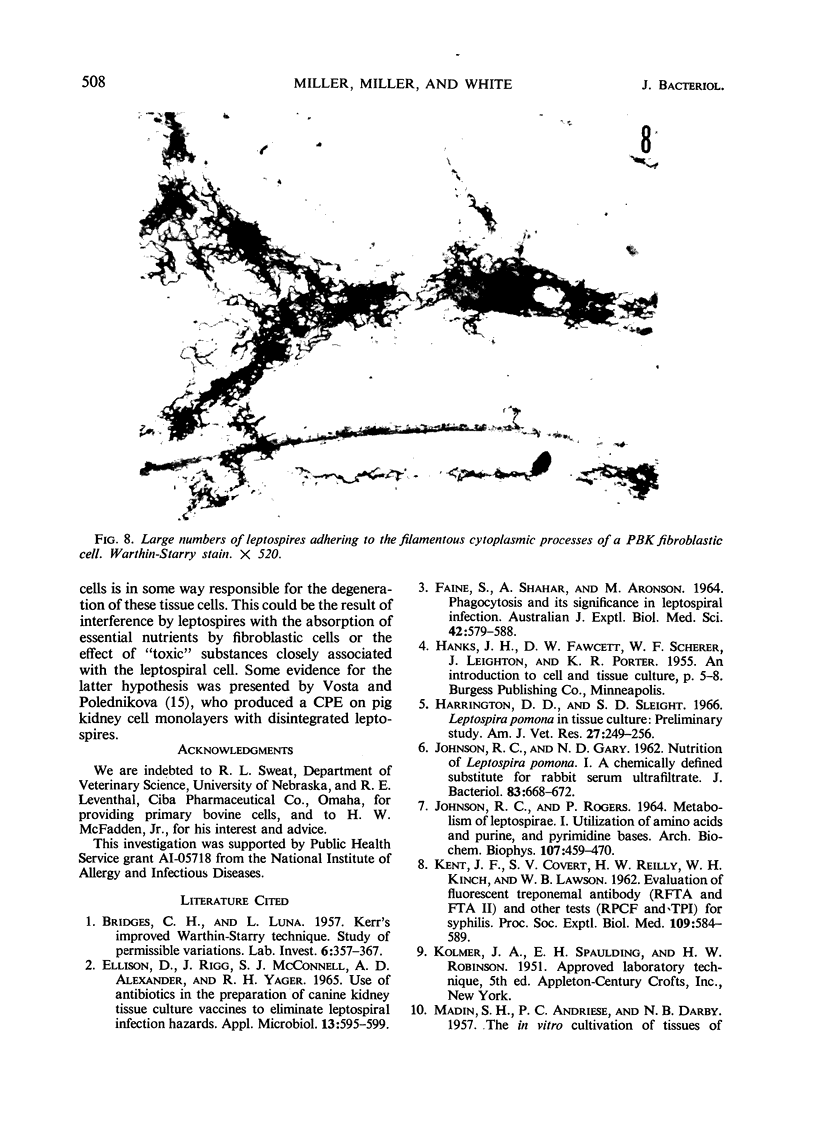
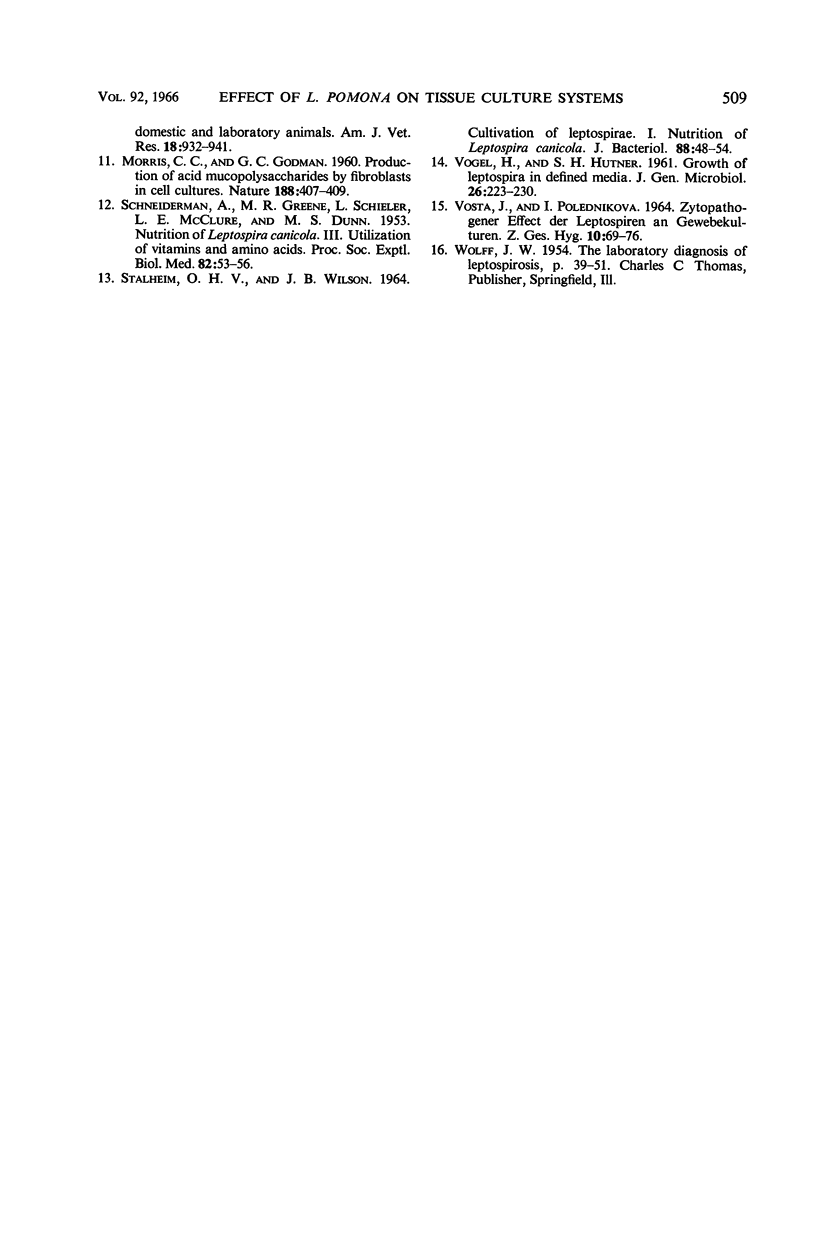
Images in this article
Selected References
These references are in PubMed. This may not be the complete list of references from this article.
- BRIDGES C. H., LUNA L. Kerr's improved Warthin-Starry technic; study of the permissible variations. Lab Invest. 1957 Jul-Aug;6(4):357–367. [PubMed] [Google Scholar]
- ELLISON D., RIGG J., MCCONNELL S. J., ALEXANDER A. D., YAGER R. H. USE OF ANTIBIOTICS IN THE PREPARATION OF CANINE KIDNEY TISSUE CULTURE VACCINES TO ELIMINATE LEPTOSPIRAL INFECTION HAZARDS. Appl Microbiol. 1965 Jul;13:595–599. doi: 10.1128/am.13.4.595-599.1965. [DOI] [PMC free article] [PubMed] [Google Scholar]
- FAINE S., SHAHAR A., ARONSON M. PHAGOCYTOSIS AND ITS SIGNIFICANCE IN LEPTOSPIRAL INFECTION. Aust J Exp Biol Med Sci. 1964 Oct;42:579–588. doi: 10.1038/icb.1964.54. [DOI] [PubMed] [Google Scholar]
- Harrington D. D., Sleight S. D. Leptospira pomona in tissue culture: preliminary study. Am J Vet Res. 1966 Jan;27(116):249–256. [PubMed] [Google Scholar]
- JOHNSON R. C., GARY N. D. Nutrition of Leptospira pomona. 1. A chemically defined substitute for rabbit serum ultrafiltrate. J Bacteriol. 1962 Mar;83:668–672. doi: 10.1128/jb.83.3.668-672.1962. [DOI] [PMC free article] [PubMed] [Google Scholar]
- JOHNSON R. C., ROGERS P. METABOLISM OF LEPTOSPIRAE. I. UTILIZATION OF AMINO ACIDS AND PURINE, AND PYRIMIDINE BASES. Arch Biochem Biophys. 1964 Sep;107:459–470. doi: 10.1016/0003-9861(64)90302-9. [DOI] [PubMed] [Google Scholar]
- KENT J. F., COVERT S. V., REILLY H. W., KINCH W. H., LAWSON W. B. Evaluation of fluorescent treponemal antibody (RFTA and FTA II) and other tests (RPCF and TPI) for syphilis. Proc Soc Exp Biol Med. 1962 Mar;109:584–589. doi: 10.3181/00379727-109-27276. [DOI] [PubMed] [Google Scholar]
- MORRIS C. C., GODMAN G. C. Production of acid mucopolysaccharides by fibroblasts in cell cultures. Nature. 1960 Oct 29;188:407–409. doi: 10.1038/188407a0. [DOI] [PubMed] [Google Scholar]
- SCHNEIDERMAN A., GREENE M. R., SCHIELER L., MCCLURE L. E., DUNN M. S. Nutrition of Leptospira canicola. III. Utilization of vitamins and amino acids. Proc Soc Exp Biol Med. 1953 Jan;82(1):53–56. doi: 10.3181/00379727-82-20021. [DOI] [PubMed] [Google Scholar]
- STALHEIM O. H., WILSON J. B. CULTIVATION OF LEPTOSPIRAE. I. NUTRITION OF LEPTOSPIRA CANICOLA. J Bacteriol. 1964 Jul;88:48–54. doi: 10.1128/jb.88.1.48-54.1964. [DOI] [PMC free article] [PubMed] [Google Scholar]
- VOGEL H., HUTNER S. H. Growth of leptospira in defined media. J Gen Microbiol. 1961 Oct;26:223–230. doi: 10.1099/00221287-26-2-223. [DOI] [PubMed] [Google Scholar]
- VOSTA J., POLEDNIKOVA I. ZYTOPATHOGENER EFFEKT DER LEPTOSPIREN AN GEWEBEKULTUREN. Z Gesamte Hyg. 1964 Jan;10:69–76. [PubMed] [Google Scholar]





